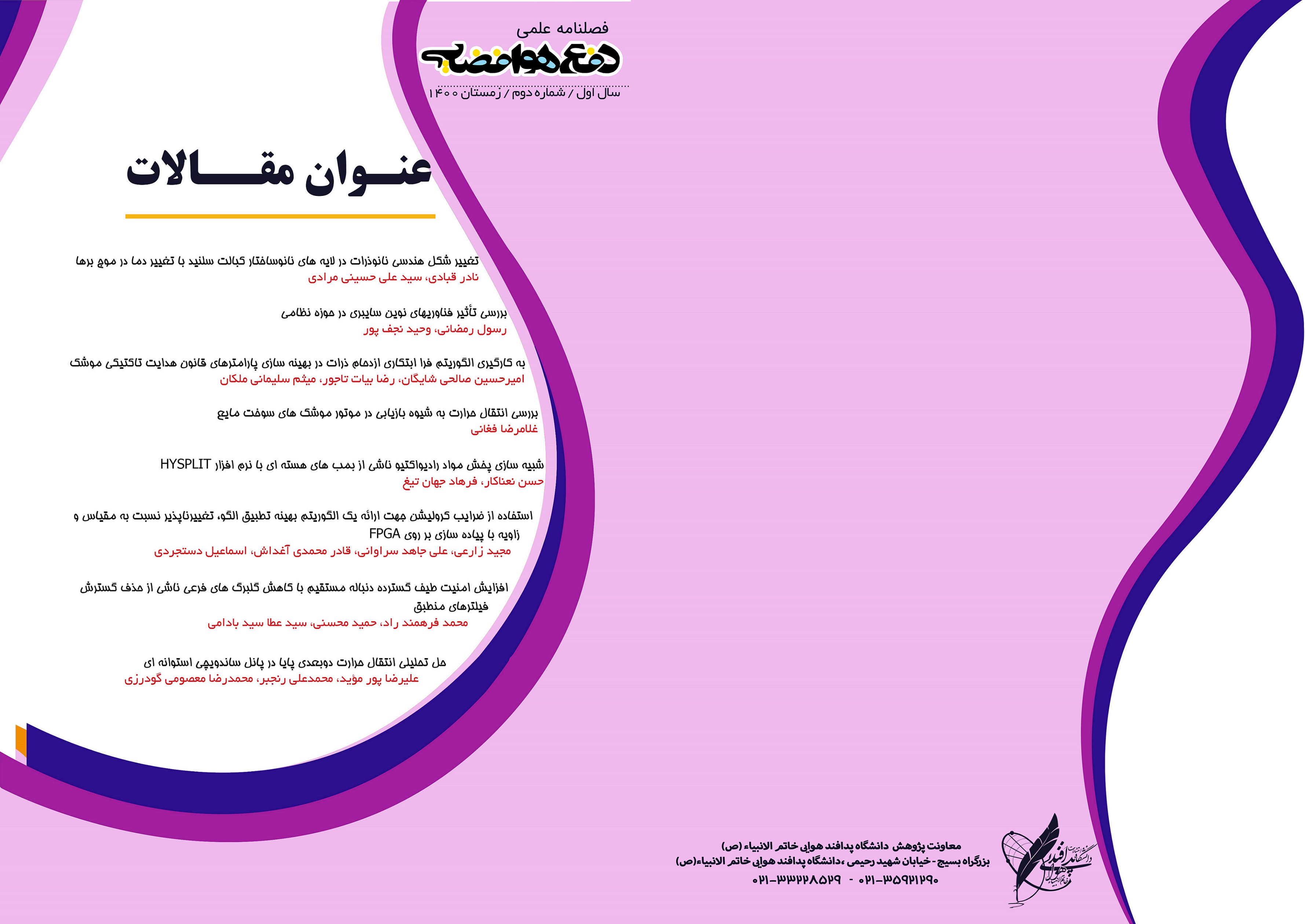نوع مقاله : مقاله پژوهشی
نویسنده
دکترای مکانیک، دانشکده مهندسی مکانیک، دانشگاه صنعتی نوشیروانی بابل، ایران
چکیده
در این مقاله، انتقال حرارت نقش عمدهای در طراحی و نحوهی عملکرد موشکها و وسایل نقلیهای که دارای راکت جلوبرنده میباشند، دارد. اهمیت اصلی این بحث مربوط به محدودهی ایمنی مواد سازنده موشک و بخصوص در قسمتهایی مثل محفظهی احتراق و نازل میباشد که تحت حرارت بحرانی قرار دارند. تنها یک نقص کافی است تا در کارکرد موشک اختلال ایجاد کند. همچنین ممکن است در اثر حرارت زیاد در گلوگاه نازل، قسمتی از فلز بهصورت منطقهای خورده شود که در آن صورت جریان گازهای خروجی بهصورت نامتقارن درمیآید که منجر به ایجاد بردار ضربهای با جهت نامناسب میگردد. این امر باعث خطا در هدایت موشک به سمت هدف موردنظر میشود و در فضاپیماها سوخت زیادی را برای تصحیح مسیر بهوسیله سیستم جلوبرنده ثانویه به مصرف میرساند. در مقالهی حاضر، میزان حرارت منتقلشده به جداره به ازای مقاطع مختلف در موتور طی شبیهسازی در نرمافزار محاسبه شده است، همچنین شرایط مایع خنککننده و دماها بهگونهای محاسبه شده است که متناسب با حرارت موجود در هر مقطع عمل خنک کاری انجام شود. برای این منظور موتور به چهار بخش محفظهی احتراق، قسمت همگرای نازل، گلوگاه نازل، قسمت واگرای نازل تقسیم شده است که نرخ حرارت منتقلشده از گازها به جداره (با توجه به شرایط گاز در مقاطع مختلف) و نیز دمای جداره در مجاورت مایع خنککننده و همچنین دمای مایع خنککننده به ازای مقاطع مختلف مربوط به هر بخش محاسبه شود. قابلذکر است، در پروژه حاضر بسته نرمافزاری ANSYS بهمنظور ایجاد هندسه، مش و شبیهسازی مورداستفاده قرار گرفته است.
موضوعات
عنوان مقاله [English]
Udding of Regenerative type heat transfer in liquid fuel missiles engine
چکیده [English]
Heat transfer plays a major role in the design and performance of missiles and vehicles that have rocket driving. The main importance of this discussion is related to the safety range missile materials, especially in areas such as the combustion chamber and nozzle, which are under critical heat. Only one failure is enough to interfere with the operation of missiles. It may also be due to excessive heat in the nozzle throat, a portion of the sheet metal locally damaged. In which case the exhaust gas flow becomes asymmetrically, which led to the creation of inappropriate force vector direction. This leads to an error in the missile guidance to the target and a lot of fuel consumed on the spacecraft to correct its path by secondary driving system. In this project the amount of heat transferred to the chamber for different sections of engine during the simulation by software is calculated, also the coolant conditions and temperatures have been calculated in accordance with existing heat and cooling operation performed in each section. For this purpose, the engine divided into four parts, the combustion chamber, the convergent nozzle, throat nozzle and the divergent nozzle. The rate of heat transferred from the gas chamber (according to the conditions of gas in different sections) as well as the chamber temperature in the vicinity of the coolant and coolant temperature calculated for different sections of each section. Notably, in this research, ANSYS software package is used to create geometry, mesh and simulations.
کلیدواژهها [English]
- missiles
- regenerative heat transfer
- combustion chamber
- nozzle

